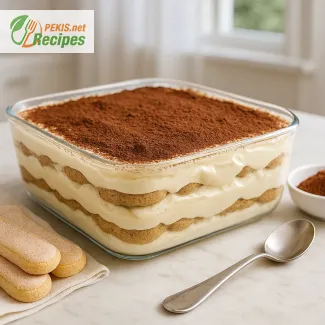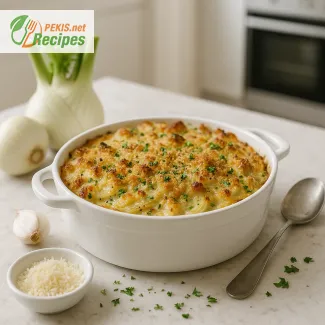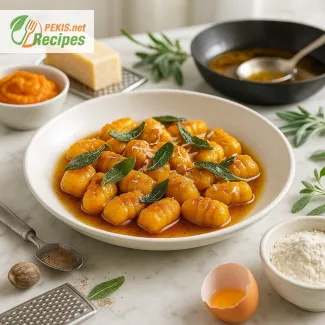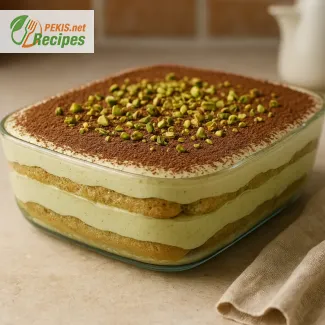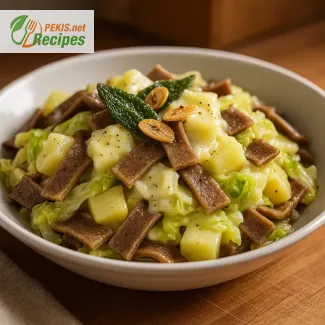
Discovering Valtellina’s Hidden Gem: The Story of Pizzoccheri
Traditional Italian comfort food reimagined for the modern table
Nestled in the alpine heart of northern Italy, the Valtellina valley in Lombardy is home to one of the country's most cherished yet underrated culinary treasures: Pizzoccheri della Valtellina. More than just a regional specialty, this rustic buckwheat pasta dish captures the soul of traditional Italian mountain cuisine, combining simplicity, bold flavors, and centuries of artisanal heritage.
Pizzoccheri is a short, flat ribbon pasta made with a blend of buckwheat and wheat flour, giving it a distinctive earthy taste and a hearty, dense texture. Buckwheat, though technically not a grain, has long been cultivated in this alpine region due to its ability to thrive in poor soil and high altitudes. Its robust flavor profile forms the perfect base for rich, comforting sauces and local ingredients, making pizzoccheri a symbol of northern Italian resilience and flavor tradition.
The origins of buckwheat pasta in Italian alpine cuisine
Dating back to at least the 16th century, pizzoccheri was born out of the need to create nutritious and satisfying meals using local, seasonal ingredients. The recipe evolved in peasant kitchens, where families would combine buckwheat noodles with savoy cabbage, potatoes, garlic, alpine cheese, and butter—items commonly available in the region. Over time, pizzoccheri grew beyond its humble roots and became a celebrated icon of Valtellina, protected under the denomination “Pizzoccheri della Valtellina IGP,” which ensures its authenticity and traditional preparation.
Today, pizzoccheri is recognized not only across Italy but also in culinary communities around the world. While it has seen creative interpretations in modern kitchens, the original version remains deeply respected for its balance of hearty ingredients and rich alpine flavors.
Buckwheat’s role in flavor and nutrition
A defining element of this dish is buckwheat flour, which contributes a nutty aroma and subtle bitterness that pairs exceptionally well with the buttery-salty richness of cheese and the sweetness of root vegetables. Unlike many types of pasta made purely from durum wheat, pizzoccheri is dense, chewy, and extremely satisfying as a winter comfort food.
Though primarily known for its culinary appeal, buckwheat is also associated with various health-supporting properties, including being naturally gluten-free in its pure form (though pizzoccheri includes wheat). Its complex flavor makes it popular among chefs looking to add depth to their dishes.
Authentic ingredients that define pizzoccheri
The beauty of pizzoccheri della Valtellina lies in its few but powerful ingredients, each one carefully chosen to reflect the alpine environment. Bitto cheese or Valtellina Casera DOP—two local semi-hard cheeses—are traditionally used for their ability to melt beautifully and bring a mild, nutty flavor. These are combined with savoy cabbage or Swiss chard, yellow potatoes, and fresh garlic, then finished with a generous drizzle of melted unsalted butter infused with sage.
The result is a dish that is rich without being overwhelming, offering a perfect interplay of textures—from the chewiness of the pasta and softness of the potatoes to the silkiness of melted cheese and the fragrance of sage.
Regional variations and seasonal adaptations
While the traditional version of pizzoccheri remains the most popular, some regions and modern chefs experiment with substituting greens, such as kale or spinach, or even adding a touch of cream for a smoother finish. However, the core principles of the dish remain intact: rustic ingredients, careful layering of textures, and a harmonious blend of sharp and mellow flavors.
In Valtellina itself, pizzoccheri is often served as a celebratory meal, particularly during colder months, when its warm, filling nature becomes the centerpiece of family gatherings. Whether presented in a cast-iron pan or baked in a ceramic dish, pizzoccheri evokes memories of alpine chalets, wooden tables, and mountain hospitality.
Cultural significance and global recognition
In recent years, pizzoccheri has gained international attention as part of the movement to rediscover authentic regional Italian dishes. It is regularly featured in culinary festivals, cooking classes, and gastronomic travel itineraries, where it serves as an ambassador of Valtellina’s unique identity.
Despite its growing fame, pizzoccheri della Valtellina retains a rare sense of integrity—it is a dish that honors its past while embracing new kitchens. With its deep roots, bold flavor, and simple elegance, pizzoccheri offers a taste of northern Italy’s culinary heritage like no other.
- Make the pizzoccheri dough:
In a large bowl, mix the buckwheat flour and all-purpose flour. Gradually add the water and knead until you obtain a firm but smooth dough. Let rest for 15 minutes, covered with a clean cloth. - Roll and cut the pasta:
Roll the dough into a 2–3 mm (⅛ inch) thick sheet using a rolling pin or pasta machine. Cut the sheet into strips 1 cm (½ inch) wide and about 7 cm (3 inches) long. Set aside on a floured surface. - Cook the vegetables:
In a large pot, bring salted water to a boil. Add the potatoes and boil for 5 minutes. Then add the savoy cabbage and continue cooking for another 5 minutes. - Add pizzoccheri:
Add the pizzoccheri noodles to the same pot and cook for 10 minutes, or until tender but firm. Stir occasionally to avoid sticking. - Prepare the cheese and butter:
While the pasta is cooking, melt the unsalted butter in a small pan. Add minced garlic and sage leaves, cooking gently until the garlic is golden and fragrant. Remove from heat. - Assemble the dish:
Drain the cooked pasta, potatoes, and cabbage carefully. In a serving dish, make alternating layers: first pasta-vegetable mix, then cubes of Valtellina Casera cheese, a sprinkle of Parmigiano Reggiano, and repeat until all is used. Pour the melted garlic-sage butter evenly over the top. - Finish and serve:
Add a final grind of black pepper, allow cheese to melt for a few minutes, and serve warm.
Elevating Pizzoccheri: Modern Touches to a Classic Alpine Dish
Creative adaptations and expert advice for perfecting your homemade pizzoccheri
The enduring charm of Pizzoccheri della Valtellina lies in its humble origins and rustic simplicity. Yet even this classic northern Italian dish offers ample opportunity for refinement and reinvention—without compromising its traditional soul. Whether you’re seeking to adjust the flavor profile, improve texture, make it more nutritious, or simply customize it to personal preferences, small but thoughtful adjustments can enhance the experience of this comforting pasta dish.
Adding flavor depth with cheese and herbs
One of the defining features of pizzoccheri is its rich, earthy base from buckwheat pasta, complemented by buttery vegetables and cheese. Traditionally, Valtellina Casera DOP or Bitto cheese is used, which both melt smoothly and carry a mild nuttiness. To deepen the umami and create a more complex flavor, consider blending in a small portion of aged Fontina or Gruyère. These cheeses introduce a sharper tone that contrasts beautifully with the mild potatoes and cabbage.
Fresh herbs can also elevate the aroma. While sage is a staple in pizzoccheri, adding a touch of thyme or rosemary to the butter infusion can layer in additional alpine notes. Just be careful not to overpower the dish—a light hand with herbs preserves the balance that defines the original.
Creating texture contrast for a better bite
Traditional pizzoccheri is deeply satisfying because of its combination of textures—chewy noodles, soft potatoes, and melting cheese. To introduce more contrast, some chefs recommend lightly pan-frying the cooked pizzoccheri in butter before assembling the layers. This adds a subtle crispness and prevents sogginess if the dish is reheated later.
Another popular adjustment is to lightly toast the garlic slices and sage leaves until crisp before using them as garnish. This adds both visual appeal and a crackling finish that contrasts with the dish’s creamy interior.
Health-conscious variations and substitutions
For those looking to lighten the recipe without sacrificing satisfaction, several swaps are effective. Replacing part of the Casera cheese with a lower-fat mozzarella can reduce saturated fat while maintaining meltability. To increase fiber and antioxidant content, substitute savoy cabbage with kale or cavolo nero (Tuscan black cabbage). Both alternatives bring more intense flavor and higher nutritional value.
To reduce sodium, use unsalted butter and limit added salt, compensating with extra garlic, pepper, or a dash of nutritional yeast for depth. You can also add a handful of chopped walnuts or hazelnuts to provide healthy fats and a subtle crunch.
Making homemade pizzoccheri from scratch
While store-bought pizzoccheri noodles exist, homemade dough provides a superior texture and flavor. Freshly rolled pasta absorbs the butter and cheese more efficiently, creating a more unified, melt-in-your-mouth experience. The tactile nature of kneading, rolling, and cutting the dough also adds an intimate connection to the cooking process—something that is lost when relying on pre-packaged ingredients.
Using fresh ingredients, especially locally grown cabbage and unprocessed potatoes, significantly boosts both flavor and aroma. The warmth and complexity of a freshly prepared pizzoccheri dish are unmistakable, offering a deeper satisfaction than any frozen or restaurant version could replicate.
Avoiding common preparation mistakes
Despite its rustic nature, pizzoccheri is a dish that requires attention to detail. One common pitfall is overcooking the noodles, which can cause them to fall apart during layering. It’s important to cook them al dente and drain them gently, ideally using a slotted spoon to avoid breaking the pieces.
Another frequent mistake is adding cheese directly to the pot while still boiling. This causes the cheese to disperse instead of creating layers of gooey richness. Always assemble the dish away from direct heat, layering noodles with cheese and vegetables, and only then pouring over hot butter.
Poor quality cheese can also ruin the texture—if Casera is unavailable, choose a high-moisture semi-hard cheese rather than a processed product. The goal is to create melt-in layers, not rubbery chunks.
Enriching the dish with seasonal ingredients
While purists may insist on cabbage and potatoes, pizzoccheri welcomes seasonal improvisation. In autumn, adding roasted pumpkin or chestnuts adds sweetness and depth. In spring, incorporate asparagus tips or young spinach for a fresher, lighter version.
For a subtle spice dimension, a pinch of nutmeg or crushed red pepper flakes added to the butter can offer warmth without overwhelming the dish’s essence.
Serving suggestions and pairing tips
Pizzoccheri is hearty enough to stand alone but pairs beautifully with dry white wines like Valtellina Superiore DOCG or a crisp Sauvignon Blanc. For a more rustic approach, serve with toasted sourdough bread to soak up any remaining cheese and butter.
When serving a crowd, consider baking the layered pizzoccheri in a ceramic or cast-iron dish, which retains heat longer and creates a slightly crisp top layer. This is especially effective when reheating leftovers, as it adds new textural elements.
Personalizing the dish to fit your culinary style
Ultimately, pizzoccheri offers a template that rewards thoughtful adaptation. Whether you prefer a vegetarian, lower-fat, or gourmet twist, the base remains flexible and forgiving. The beauty of this dish lies in its ability to blend tradition with personal expression, giving every cook an opportunity to make it uniquely their own.
Allergens present in the recipe:
- Gluten (from all-purpose flour)
- Dairy (Casera cheese, Parmigiano Reggiano, butter)
Allergen and gluten replacement suggestions:
- Replace all-purpose flour with gluten-free flour blend to reduce gluten (note: buckwheat is naturally gluten-free).
- Use plant-based cheese alternatives (unsweetened vegan cheese) and vegan butter to eliminate dairy.
- Ensure Parmigiano substitute is dairy-free for a full plant-based version.
Vitamins and minerals per serving (approximate):
- Vitamin A: 550 µg – supports vision and immune health
- Vitamin K: 145 µg – essential for blood clotting
- Vitamin C: 38 mg – strengthens immune system and collagen formation
- Calcium: 350 mg – maintains bone density
- Iron: 3.2 mg – supports oxygen transport
- Magnesium: 120 mg – supports muscle and nerve function
- Potassium: 780 mg – regulates blood pressure and fluid balance
- Zinc: 2.4 mg – supports wound healing and immune defense
Antioxidants per serving (approximate):
- Rutin (from buckwheat): 18 mg – supports blood vessel health and reduces inflammation
- Lutein (from savoy cabbage): 1.5 mg – protects eye health
- Beta-carotene (from cabbage): 2.3 mg – converted to Vitamin A, supports skin and immunity
- Phenolic compounds (from garlic and sage): 12 mg – antioxidant, anti-inflammatory benefits
